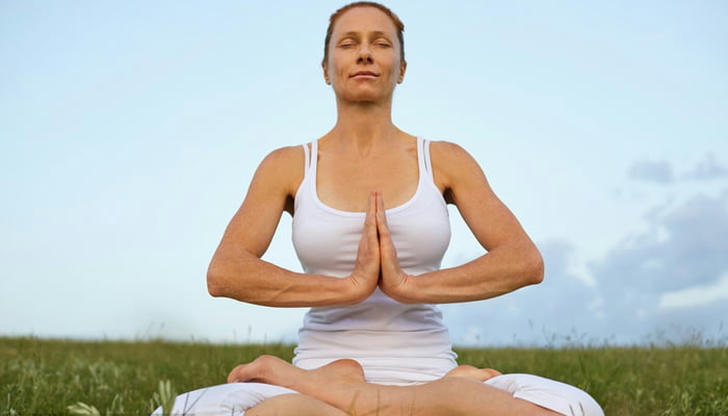Mastering VO₂ Max: Your Final Performance Edge
VO₂ max, also referred to as maximum oxygen uptake, represents the ultimate measure of your body's efficiency in using oxygen during physical exertion. It plays a crucial role in assessing your aerobic fitness, particularly if activities like running or swimming are part of your routine.
Enhancing your VO₂ max is a primary objective for those looking to improve their aerobic capacity. Essentially, it reflects how effectively your body can absorb oxygen from the atmosphere and convert it into energy through ATP (adenosine triphosphate), which fuels muscle contractions and other bodily functions. Simultaneously, the carbon dioxide produced is expelled during exhalation.
A higher VO₂ max signifies your body's ability to utilize oxygen efficiently, which is especially advantageous for endurance activities requiring sustained oxygen intake over prolonged periods.
While athletes commonly use VO₂ max to gauge performance, its significance extends beyond sports. It serves as a valuable indicator of overall cardiovascular health across diverse demographics, aiding medical professionals in assessing heart and lung function in clinical settings.

How to measure your VO₂ max?
Maintaining or improving VO₂ max involves specialized assessments typically conducted in medical settings by professionals such as doctors or fitness specialists. These evaluations, including submaximal exercise tests performed below maximum heart rate levels, provide valuable insights into cardiovascular endurance and overall fitness.
Various VO₂ max tests cater to different fitness levels and preferences, ranging from treadmill protocols like the Astrand test to simpler walk/run assessments, tailored to your exercise experience and specific objectives.
To standardize VO₂ max comparisons across activities and fitness contexts, it is often converted into metabolic equivalents (METs) by dividing the VO₂ max value by 3.5. This normalization facilitates easier interpretation and meaningful comparisons.
What is a good VO₂ max?
Determining what constitutes a 'good' VO₂ max considers factors like age, gender, fitness level, and environmental conditions. While age and sex influence VO₂ max to some degree, maintaining or enhancing it primarily hinges on consistent exercise and fitness management practices.
There is no universally ideal VO₂ max score, but aiming for a 'good' or higher fitness category, typically above the 60th percentile, is a realistic goal for most individuals.
VO₂ max naturally declines with age, reinforcing the importance of proactive strategies to preserve optimal levels. Research indicates that even occasional vigorous exercise sessions can mitigate this decline and enhance VO₂ max performance.
Why do you need to increase your VO₂ max?
Elevating your VO₂ max benefits everyone, not just athletes. Studies indicate a higher VO₂ max is associated with increased longevity, underscoring its role in maintaining overall health and extending lifespan.
The benefits of increasing VO₂ max extend beyond athletic performance. Studies have linked higher VO₂ max levels with a reduced risk of cardiovascular diseases, such as heart attacks and strokes. This underscores the importance of VO₂ max in maintaining heart health and overall cardiovascular fitness.
In conclusion, elevating your VO₂ max through targeted exercise and lifestyle strategies benefits individuals of all fitness levels and ages. Beyond enhancing athletic performance, increasing VO₂ max promotes cardiovascular health, improves longevity, and supports overall well-being. By prioritizing aerobic fitness and adopting healthy lifestyle habits, you can optimize your body's oxygen utilization, enhance physical resilience, and enjoy a healthier, more active life.
How to increase your VO₂ max?
Interested in boosting your VO₂ max? As you age, it typically declines, but there are effective strategies to help maintain it. According to recent research, even sporadic intense workouts can significantly enhance VO₂ max. Here are some practical tips to consider:
Explore high-intensity interval training (HIIT): This method involves alternating short bursts of vigorous aerobic exercise with brief periods of rest or lower-intensity activity. For example, sprinting for a few minutes followed by a recovery period, then repeating the cycle.
Diversify aerobic exercises within a single session: Incorporate activities like cycling, swimming, and running, interspersed with breaks. This approach keeps your workout dynamic and challenges different muscle groups.
Any cardiovascular exercise counts: Even if you're not engaging in high-intensity workouts, any form of aerobic activity that elevates your heart rate (beyond a leisurely walk) can enhance cardiovascular fitness and boost VO₂ max, particularly beneficial if you've been sedentary.

Effective strategies to boost VO₂ max include incorporating high-intensity interval training (HIIT), which challenges the cardiovascular system through alternating intense aerobic efforts with short recovery periods, promoting improvements in oxygen utilization and overall fitness.
Furthermore, varying aerobic activities within a single workout—such as cycling, swimming, and running—can maximize gains in VO₂ max. This approach exposes the body to diverse physical demands, fostering comprehensive fitness development.
Engaging in moderate to vigorous cardiovascular exercises beyond leisurely walking is essential for enhancing VO₂ max. These activities stimulate the cardiovascular system, improving overall cardiorespiratory fitness and optimizing oxygen efficiency.
Increasing VO₂ max not only enhances physical performance but also yields broader health benefits. Enhanced oxygen delivery and utilization support sustained endurance and overall well-being, reducing fatigue and stress while bolstering immunity.

In summary, VO₂ max serves as a pivotal gauge of aerobic fitness and cardiovascular health. Whether you're an athlete aiming for peak performance or simply striving to maintain good health, optimizing VO₂ max through tailored exercise regimens is fundamental for achieving long-term fitness goals and enhancing overall well-being.
